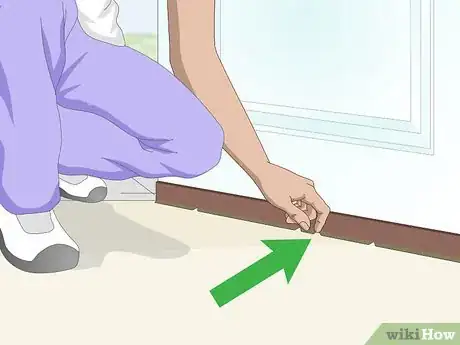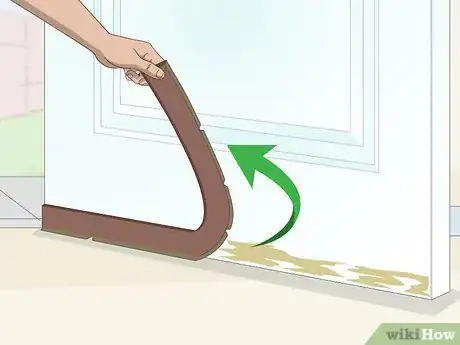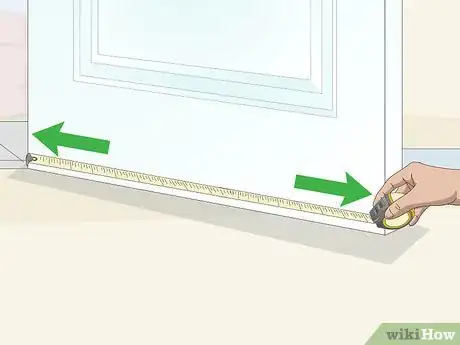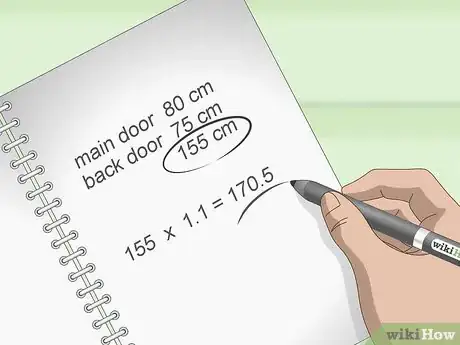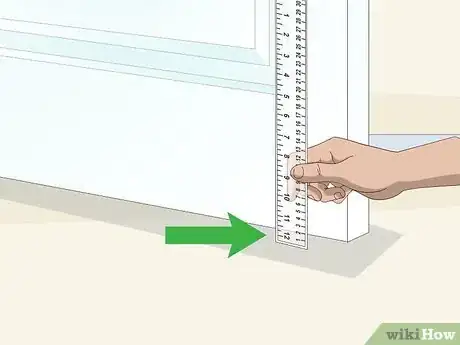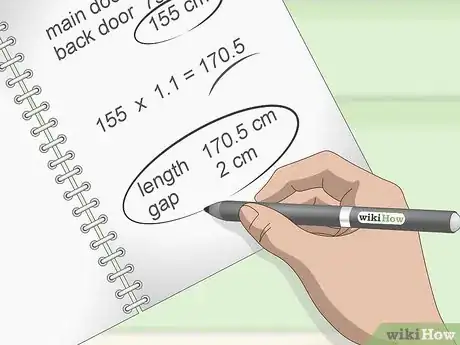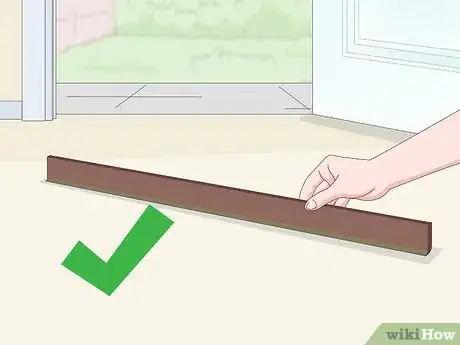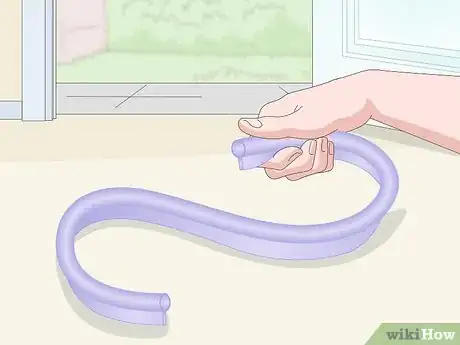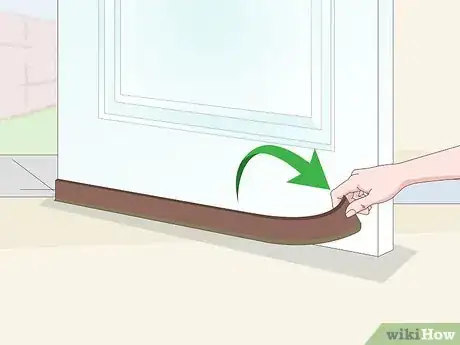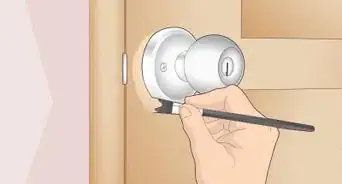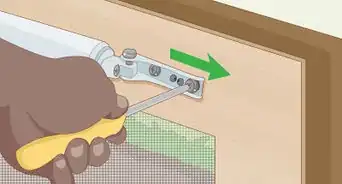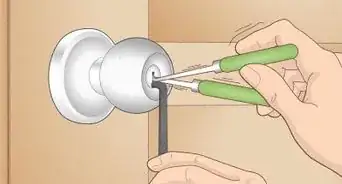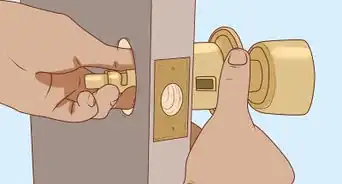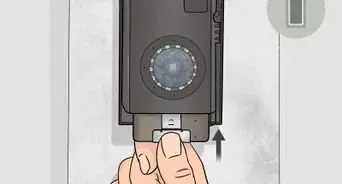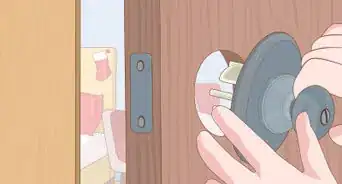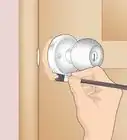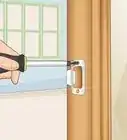This article was co-authored by Jacob Pischer. Jacob Pischer is a Home Improvement Specialist and the Owner of Helpful Badger, a home repair service in Portland, OR. With over four years of experience, Jacob specializes in a variety of handyman services including pressure washing, cleaning gutters, repairing drywall, fixing leaky plumbing fixtures, and repairing broken doors. Jacob studied at Madison Area Technical College and has a background in real estate investment.
There are 8 references cited in this article, which can be found at the bottom of the page.
This article has been viewed 82,106 times.
Weather stripping can be a great way to protect your home from drafts and reduce your energy costs in the winter. The stripping under your door should be replaced when it becomes dry, cracked, or starts to peel off. Felt or foam stripping is affordable and easy to install, and metal, rubber and vinyl typically last longer but cost a little more and can take a while to install. Choose a product that fits your budget, timeframe, and style.
Steps
Removing Your Current Stripping
-
1Check your stripping to determine whether it needs replacing. Some types of stripping, particularly felt and foam, only last a few years. If your stripping is worn, cracked, or loose to the point that it doesn’t properly seal the gap under your door, it may be time to replace it.[1]
-
2Pull the stripping off if it is attached with adhesive. If your stripping seems to be stuck on to the bottom of the door, or if you can’t see any screws or nails holding it on, gently pull it off.[2] If it doesn’t come off easily, you may need to use a knife or flat-head screwdriver to help force it off.[3]Advertisement
-
3Remove any nails or screws with a claw hammer or drill. If your stripping is attached with nails or screws, remove them using the claw end of a hammer or a drill set to reverse. If the nails or screws are still in good shape, save them to use later.
- The stripping may also be attached with staples, which can be removed either with a staple remover or a flat-head screwdriver.[4]
-
4Clean the bottom of your door thoroughly. Use soap and water and, if necessary, adhesive cleaner to thoroughly clean the bottom of your door. If it is extremely dirty or difficult to get to, you may want to take the door off its hinges for this step.[5]
Taking Measurements for New Stripping
-
1Measure the width of every door you will install stripping on.[6] If multiple doors need new stripping, take the measurements for all of them. You can do this by using a tape measure across the width of the bottom of the door. Write down your measurements.
- Remember, you are measuring the door itself, not the width of the doorway.
-
2Add up the width of all the doors you measured. Once you have measured every door you plan to buy new stripping for, add up all the measurements you took. Check your math a few times to make sure it’s correct.[7]
-
3Add another 5-10% to factor in waste. It’s always better to have too much than to have to go back to the store and buy more. Multiply the total width of all your doors by 1.05 or 1.1. This is how much you will buy from the store.[8]
- For instance, if you measure all the doors you’re buying stripping for and their combined width is 108 inches (270 cm), you should multiply this number by at least 1.05, which would be 113.4 inches (288 cm).
-
4Measure the height of the gap under your door. This is especially important if you are using a different type of stripping than you had before. You want to make sure the product you buy will be large enough to fill the gap but not so large that you can’t close the door easily.[9]
-
5Make a note of your measurements. Check your math a few times to make sure it’s correct. Then make a note of the number you came up with, so you will remember when you get to the store.
Choosing a Replacement Product
-
1Use the same type of stripping you had if it’s been working well. The best way to know if the stripping you buy will fit is to use the kind you already have. You can take the old stripping to the store to match it, or write down the brand and style if you know it. If your old stripping was not effective or to your liking, however, you should try something new.
-
2Choose felt or foam stripping if the door doesn’t get used frequently. Felt and foam are both very low-cost and easy to install. However, they typically don’t hold up for very long, so they may not be a good choice for doors that see a lot of wear and tear.[12]
- A slightly more durable option is reinforced foam or felt, which includes a metal or wooden strip to strengthen the foam or felt.[13]
-
3Buy tubular vinyl or rubber stripping for doors that are used often. If you want something that will last for at least a few years, vinyl and rubber are very durable. The tubular shape means that the material will expand or retract to fill the gap it’s sealing.[14]
-
4Use a metal or wooden door sweep for a better look. This does not create the tightest seal, since it doesn’t change shape to fill the gap, but is very durable and more attractive than other materials. It can even be painted to blend in with your door.[15]
Installing New Stripping
-
1Measure the amount of stripping you will need twice before cutting it. Even if you already took measurements before buying the stripping, measure your door again before cutting a piece to fit it. If you bought the type of stripping that slides onto the bottom of the door, you can slide on a long piece and mark where to cut it.[16]
-
2Cut the stripping with shears or tin snips. Foam and felt should cut easily with heavy scissors or shears. For metal or metal-reinforced stripping, you will need a metal saw or tin snips. Wood should be cut with a hand saw.[17]
-
3Read the directions on your stripping product. The stripping you bought will most likely have instructions on the packaging that explain how it should be installed. Read these carefully and make sure you have the tools necessary before starting.
- Some types of stick-on stripping should only be applied in temperatures above 20°F (-6.7°C). Your product’s instructions should say whether this is the case.[18]
-
4Take your door off its hinges if you can’t easily access the bottom. If you need to attach fasteners to the underside of the door itself, you may have to remove the entire door to access it more easily. Loosen the hinge pins by inserting a nail in the underside of each hinge and tapping it gently with a hammer until the hinge pin begins to move up. Then place the tip of a flat-head screwdriver under the head of the hinge pin and gently tap the bottom of the screwdriver with a hammer until the pin slides out completely.[19]
-
5Stick your stripping to the bottom of the door if it has adhesive. If you are using a stick-on foam or felt product, remove the backing that covers the adhesive part. You may want to do this a section at a time as you attach it to the door, so that the adhesive doesn’t stick to anything else while you’re working with it. Press it firmly against the bottom of your door, making sure to line it up properly before securing it.[20]
-
6Use nails or screws to fasten the stripping if it does not have adhesive. The product you bought should indicate whether it should be attached with nails, screws or staples. It may also have pre-made holes for the fasteners to attach through.
-
7Make sure the door still closes easily once the stripping is installed.[21] The stripping should fill the gap under your door, but not make it harder to open or close. If it appears to be too big, you may want to start over with a different product.
Expert Q&A
Did you know you can get expert answers for this article?
Unlock expert answers by supporting wikiHow
-
QuestionCan you replace weather stripping on doors?
 Lui ColmenaresLui Colmenares is a handyman and licensed home improvement contractor for Mr. Handy NYC based in New York City, New York. Lui is trained and educated as an industrial engineer and specializes in carpentry, painting, and general handyman work such as mounting TVs, doorknob and deadbolt installation, furniture assembly, tile repair, and grouting. Mr. Handy NYC prides itself on quality work performed with speed, skill, and punctuality.
Lui ColmenaresLui Colmenares is a handyman and licensed home improvement contractor for Mr. Handy NYC based in New York City, New York. Lui is trained and educated as an industrial engineer and specializes in carpentry, painting, and general handyman work such as mounting TVs, doorknob and deadbolt installation, furniture assembly, tile repair, and grouting. Mr. Handy NYC prides itself on quality work performed with speed, skill, and punctuality.
Handyman
Things You’ll Need
- Tape measure
- Claw hammer or drill for removing nails or screws
- Soap or household cleaning fluid
- Adhesive cleaner (if original stripping is stuck on)
- Weather stripping
- Scissors (if using foam or felt stripping)
- Tin snips (if using metal stripping)
- Hand saw (if using wood stripping)
- Flat-head screwdriver, long nail, and hammer (if removing door from hinges)
- Nails, screws or staples for fastening stripping according to instructions
References
- ↑ https://www.houselogic.com/remodel/windows-doors-and-floors/how-to-replace-weather-stripping/
- ↑ Jacob Pischer. Home Improvement Specialist. Expert Interview. 4 September 2020.
- ↑ https://www.houselogic.com/remodel/windows-doors-and-floors/how-to-replace-weather-stripping/
- ↑ https://www.thisoldhouse.com/ideas/essential-guide-to-weatherstripping
- ↑ https://www.houselogic.com/remodel/windows-doors-and-floors/how-to-replace-weather-stripping/
- ↑ Jacob Pischer. Home Improvement Specialist. Expert Interview. 4 September 2020.
- ↑ https://www.familyhandyman.com/doors/door-weather-stripping/view-all/
- ↑ https://energy.gov/energysaver/air-sealing-your-home/weatherstripping
- ↑ Jacob Pischer. Home Improvement Specialist. Expert Interview. 4 September 2020.
- ↑ Lui Colmenares. Handyman. Expert Interview. 18 August 2020.
- ↑ Lui Colmenares. Handyman. Expert Interview. 18 August 2020.
- ↑ https://www.fixr.com/costs/weatherstripping
- ↑ https://energy.gov/energysaver/air-sealing-your-home/weatherstripping
- ↑ https://www.fixr.com/costs/weatherstripping
- ↑ https://energy.gov/energysaver/air-sealing-your-home/weatherstripping
- ↑ https://www.houselogic.com/remodel/windows-doors-and-floors/how-to-replace-weather-stripping/
- ↑ https://www.houselogic.com/remodel/windows-doors-and-floors/how-to-replace-weather-stripping/
- ↑ https://energy.gov/energysaver/air-sealing-your-home/weatherstripping
- ↑ https://www.familyhandyman.com/doors/how-to-remove-a-door/view-all/
- ↑ https://www.houselogic.com/remodel/windows-doors-and-floors/how-to-replace-weather-stripping/
- ↑ Jacob Pischer. Home Improvement Specialist. Expert Interview. 4 September 2020.
